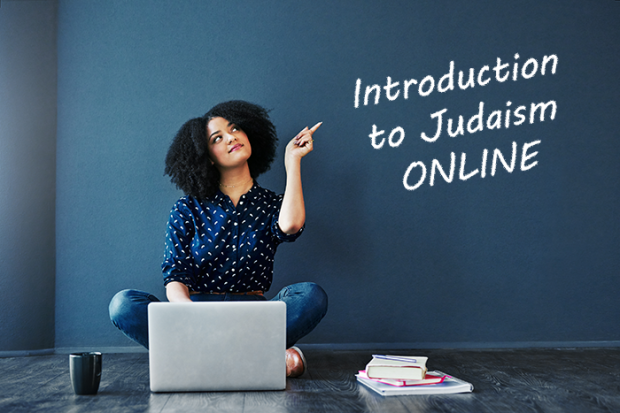
So, you’ve been to Shabbat services once or twice, and found them mystifying. Or perhaps you have been invited to a bar mitzvah service and you have no idea what to do.
Some questions that may have crossed your mind: What are people getting out of this? Does everyone here understand the Hebrew? What’s with all the bowing and stuff? What if I do something wrong? Here are some ways to get something out of the experience as a beginner. There is no wrong way to be in a service as long as you are respectful. So turn off your cell phone and experiment with these. Some work for one person, some for another. Your experience will be unique to you.
1. Relax.
You are not the only person:
- Who doesn’t understand Hebrew.
- Who wonders what the prayers mean.
- Who feels funny about all the choreography (bowing, etc.)
- Who doesn’t sing very well.
- Who has feelings that make it difficult for you to relax in a strange prayer service.
Jewish communal prayer is not something Jews are born knowing how to do. It’s a learned art. You may or may not want to learn the classical approaches to it, but there are ways to have a very satisfying experience as a beginner.
2. Ask for help.
It is OK to ask for help. The first thing you may want to ask for is a prayer book with translations in it, if the one you get is all in Hebrew. In a Reform synagogue, all of the books will have translations, and that is true for many Conservative synagogues, too.
If you get lost and don’t know what page you should be looking at, it’s OK to quietly ask a neighbor for help.
3. Don’t worry.
If there are English responses, and you are in the right place in the book, mazal tov! But if you are lost, it is OK to let the rest of the congregation take care of responses. If you become a regular you will learn them, but remember, no one is born knowing this stuff. One nice thing: if you say Amen [ah-MAYN] at the end of a blessing, you get credit for saying the whole blessing.
You may not know any of the music. You may know some of it. Sing what you know, sit back and listen to the new things. Let the music wash over you. Sometimes the song-leader or cantor will teach a new tune. When that happens, you are in luck: no one knows what they are doing! You get to begin with the congregation.
As for standing, sitting, bowing, etc., if you stand and sit with everyone else, you’ll be OK. If you are disabled or injured, take care of yourself and do what works for you. To learn more about choreography, check out my earlier blog entry, “Dancing with the Rabbis.”
If an usher offers you an aliyah (pronounced a-li-AH or a-LEE-yah) say, “No, thank you.” (That means, “offer you a chance to go up and sing or say the Torah blessings all by yourself.” If you are truly a beginner, you almost certainly don’t want to do that. If you are not officially Jewish, you shouldn’t do it, out of respect. Either way, “no, thank you” covers the subject. Don’t worry, they’ll find someone else.
4. Let the prayers and music flow.
Let the words and the music flow over you. If something is interesting or sticks in your mind, let your mind play with it. Words and music may bring up emotions for you: let those flow, also. If the book is in your way, put it down (on the bench or in a rack or in your lap – do not put a prayer book on the floor.)
5. Listen to the music of the Hebrew language.
When prayers are in Hebrew, often they are prayers that have been said in just that way for hundred or thousands of years. Some people are moved to listen to the Hebrew and simply reflect upon how many generations have said those prayers in that way. Think of the people who have listened to those sounds at some point in their lives: Maimonides, Jesus, Ruth Bader Ginsberg, Albert Einstein, Hank Greenberg, Alan Greenspan, Ann Landers…
6. Sit quietly and let your own thoughts flow.
For some people, the prayers are a framework within which their minds are set free, almost a kind of meditation. It is fine to let that happen. Your mind may open in unexpected ways.
7. Pray.
If there is a way you are accustomed to praying, you are welcome to pray in your own mode: have a conversation with God, say familiar prayers quietly, etc. However, kneeling or making the sign of the cross would be very distracting to others, and is disrespectful in this context even if that is not your intent.
The words of Jewish prayer may also lead you into a dialogue with or a meditation about the Holy.
Jewish prayer has fixed words, words we say every time, but they are there as a framework, so that our spirits can be free to find the Holy. Some of the prayers may even be troubling in their wording, but that’s part of it, too: those prayers push us into thinking deeply about what we believe and the choices we make.
8. Listen to the voices around you.
Jewish communal prayer happens in community, with a minimum of 10 participants, a . Some voices will be sweet and clear; others may be out of tune or mumbled. Some may be rather loud, some soft. Some clearly know all the responses; some stumble. This is what a Jewish community is: a group of disparate voices, all united by the activity of saying the prayers and singing the songs. Likely they will disagree if you do a poll about what they prayers mean, but they unite in Doing.
9. Simply be.
If all of this is overwhelming, try simply being where you are. Feel the weight of your body sitting in the pew or chair. Feel your feet on the floor. Feel the air moving in and out of your lungs, feel your heart beating. Feel the emotions that come through, including boredom, if that is what you feel. Judaism teaches that all of creation is good, and that our bodies are good. This, too, is legitimate Jewish prayer.


